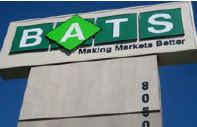Everything is A OK at BATS Exchange’s disaster recovery site.
Last Thursday, March 14, the exchange operator moved its entire U.S. staff, 102 people, from its Lenexa, Kansas headquarters – to its back-up facilities 20 miles away. It then proceeded to run both of its exchanges BZX and BYX from the facility.

This was the first time the operator performed a full day’s worth of trading and moved all staff for an entire trading session, Randy Williams, senior vice president of investor relations and corporate communications told Traders Magazine.
BATS’ test did not affect the systems that actually do the trading. Those are located at – data centers in Weehawken, NJ, and Chicago, -. The BZX exchange, which includes an equities and options market, and BYX exchange, which includes an equities market, both operated as usual, Williams said. All of the trading systems for those markets are located in Weehawken, the primary facility, and Chicago, the backup site. Everything operated out of Weehawken on the 14th, as it does every day and no switchover to the backup occurred.
There was no problem with the main facility. Rather, the switch was made in light of recent natural disasters affecting the U.S. and with an eye towards the possibility of the Securities and Exchange Commission pushing ahead on policy initiative Reg SCI. That rule is an effort to limit the technical disruptions and trading glitches that have plagued equities markets since the May 2010 flash crash.
“The site has never had to be used in an actual natural disaster,” Williams told Traders Magazine. “We wanted to do something that mirrored what a real disaster situation would be like.”
The switchover was primarily one of people as the mission critical trading systems are located in Weehawken and Chicago. Williams said that the Lenexa headquarters was shut down completely. He told Traders Magazine the exchange physically moved its people in the headquarters to the disaster recovery site. Email, phones, computer files, etc. all switched over to the backup facility where there is complete redundancy.
From there, top executives, surveillance personnel and operations staff conducted a normal day’s worth of business. This included the trading of U.S. equities and options for the entire day, he added. No problems were reported.
The exchange traded 642 million shares that day or 10.6 percent of U.S. daily market volume. Prior to the voluntary shutdown of the primary facility, the operator traded an average of 632 million shares for the last five days.
While this was a first all-hands test and relocation for all BATS personnel, the facility has been used every month since its creation in 2008. Between 35 to 40 operations, regulatory and surveillance staff work from the secondary location to test the site’s continuity and function, Williams said.
“This time everyone was taken out of the Kansas City headquarters; executives, all the teams, nearly 100 employees,” Williams said.




